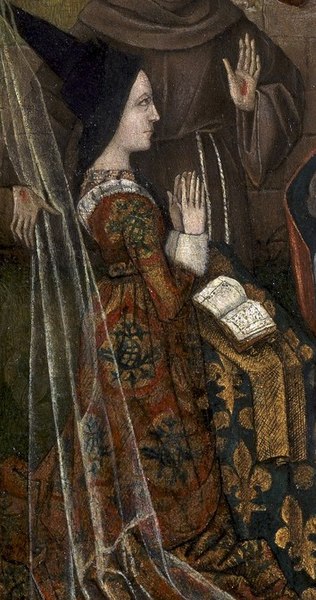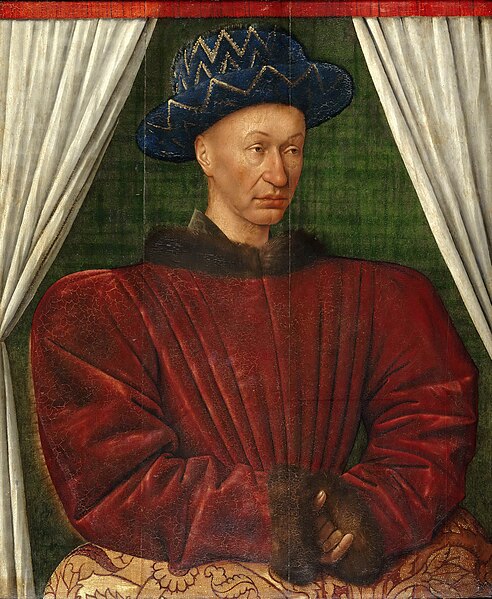Louis XI, called "Louis the Prudent", was King of France from 1461 to 1483. He succeeded his father, Charles VII. Louis entered into open rebellion against his father in a short-lived revolt known as the Praguerie in 1440. The king forgave his rebellious vassals, including Louis, to whom he entrusted the management of the Dauphiné, then a province in southeastern France. Louis's ceaseless intrigues, however, led his father to banish him from court. From the Dauphiné, Louis led his own political establishment and married Charlotte of Savoy, daughter of Louis, Duke of Savoy, against the will of his father. Charles VII sent an army to compel his son to his will, but Louis fled to Burgundy, where he was hosted by Philip the Good, the Duke of Burgundy, Charles' greatest enemy.
Louis XI wearing his Collar of the Order of Saint Michael, c. 1469
In this painting by Jean Fouquet, Louis's father Charles VII is depicted as one of the three magi, and it is assumed that Louis, then dauphin, is one of the other two.
Margaret of Scotland
Charlotte of Savoy
Charles VII, called the Victorious or the Well-Served, was King of France from 1422 to his death in 1461. His reign saw the end of the Hundred Years' War and a de facto end of the English claims to the French throne.
Portrait c. 1445–1450
Joan of Arc at the coronation of Charles VII with her white flag
Charles VII the Victorious by Antoine-Louis Barye, held in The Walters Art Museum
Charles VII Royal d'or.








